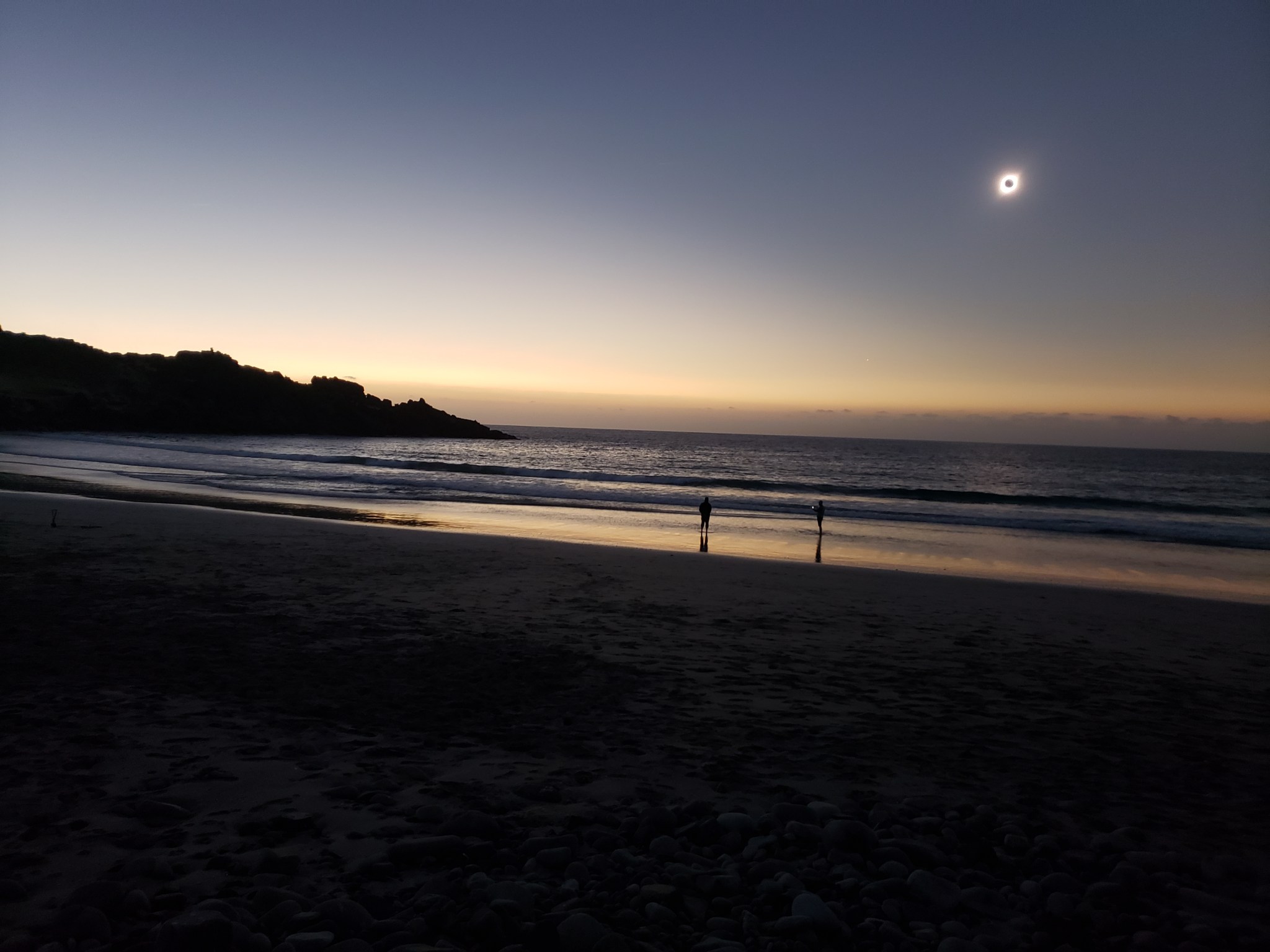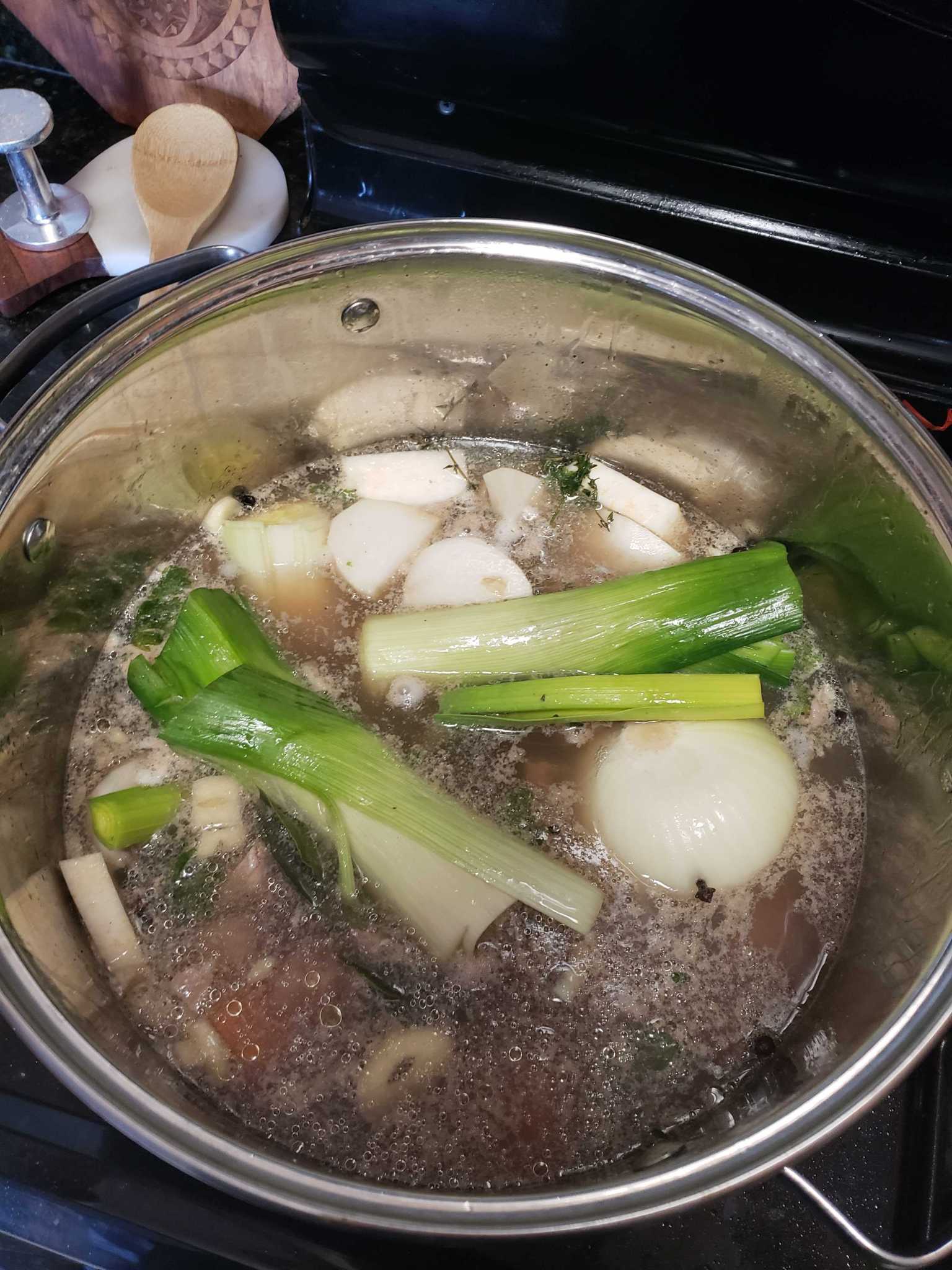Name: Thomas J. Fauchez
Title: Planetary scientist
Organization: Code 699, Planetary Environments Laboratory, Solar System Exploration, Science Directorate
What do you do and what is most interesting about your role here at Goddard? How do you help support Goddard’s mission?
I model the atmospheres of exoplanets, which are planets orbiting stars other than our Sun. I focus particularly on the TRAPPIST-1 system, a system with seven planets about 40 light-years from Earth. I try to understand whether any of these planets could be habitable, and how well we will be able to explore their habitability further. I look forward to observations of this system by the upcoming James Webb Space Telescope.
When and why did you become a planetary scientist?
I grew up in a small, rural town in the north of France where I could see the stars on clear nights. When I was about 8 years old, my father’s company gave gifts to their employee’s children at Christmas. Each child was allowed to choose one book. I liked the cover of one book that turned out to be about astronomy; the stars and galaxies on the cover drew my eyes to them. The artistic element of astronomy first caught my attention. I chose that book, read it and loved the scientific content. I began reading dozens of astronomy books. Still do.
What is your educational background?
I got a bachelor’s in physics and chemistry from the University of Calais and Dunkerque (ULCO for Université du Littoral Cote d’Opale) in France. I then got a master’s in astrophysics from the University of Liege in Belgium. I returned to France for a Ph.D. in Earth’s atmospheric sciences focusing on 3D cloud modeling and radiative transfer from the University of Lille. I then got a post-doctoral fellowship from NASA’s Postdoctoral Program (NPP) at Goddard’s Climate and Radiation Laboratory, still working on cloud and radiative transfer modeling.
How did you come to study exoplanets?
My passion has always been for astronomy and I wanted to return to this field. Exoplanets combines my education and passion in astronomy and earth science.
Goddard encourages people to expand their areas of expertise. I joined Goddard’s Exoplanet Seminar Club when I first arrived and through people I met there, who introduced me to others, I was able to move into my current laboratory. I want particularly to thank Dr. Shawn Domagal Goldman, who gave me this great opportunity!
In modeling an exoplanet’s atmosphere, what are you searching for?
Modeling requires a lot of computer time. So I spend most of my time in front of my laptop, which I use to set up and run simulations on supercomputers. Once the Webb telescope is operating, I hope to be able to compare my modeling with real observations, which will be very exciting.
We are looking for biosignatures, gases that can be produced by life as we know it such as, for example, oxygen, ozone and methane. We also looking for liquid surface water because water is essential for life as we know it.
What about life as we perhaps do not know it?
We have to start with life as we know it and extrapolate from the knowns. One of our concerns is that we may perhaps one day not recognize life because it is so different from what we know. Astrobiology is an incredible research area because it combines almost every field of science and also requires philosophy and thinking beyond the box, trying to escape the paradigm of “life as-we-know-it.”
Please tell us about viewing the July 2, 2019, solar eclipse in Chile.
My first eclipse was the American total solar eclipse in 2017. It was so amazing I decided I had to see another one.
I recently took a vacation to see the July 2, 2019, total solar eclipse north of La Serena, Chile. During the eclipse, I was on a beach standing a few feet from the waves. The eclipse happened in the late afternoon. Once the eclipse finished, it became sunset. It was a very interesting, beautiful transition between the partial eclipse, full eclipse, partial eclipse again and sunset.
When I see an eclipse, I cannot describe my feelings. I am usually speechless. The corona is so bright, it is the most beautiful thing in nature I have ever seen in my life. The artistic side of astronomy is so very beautiful! In person, the corona is just extremely bright. I do not think about any science, I just enjoy the beauty of the moment.
I had been to Chile before during my master’s because most of Europe’s main observatories are in Chile. This time, I was not inside the facilities. I enjoyed exploring the country as I had done many years ago.
What is it like being married to another scientist?
My wife and I met 10 years ago. We grew up in the same town in France. She works at the Uniformed Services University of the Health Sciences (USUHS) in Bethesda doing whole genome sequencing work. Being in different fields means we do not have to talk about work all the time. But since we both have a scientific education, we understand each other’s work and can enjoy discussing and supporting what we both do.
You have been at Goddard about five years. What is the most important thing you have learned?
The most important thing I have learned is how crucial is to develop a network. Goddard is a fantastic place, concentrating thousands of space science researchers and there are multiple opportunities to collaborate in various research area. I am part of the Sellers Exoplanet Environments Collaboration (SEEC), which brings scientists across the four NASA science divisions to work together on exoplanet sciences. This is super exciting!
Who is the most inspiring person you have met at Goddard?
I grew up reading a lot of books about cosmology, and I was fascinated about the cosmic background radiation map from COBE. I was fortunate enough to meet Dr. John Mather, a Nobel laureate for his work on the Cosmic Background Explorer (COBE), and even to speak to him during the Hubble 25th anniversary celebration. Dr. Mather gave a speech. After he finished, I asked him a few questions about dark matter and dark energy.
Who is your science hero?
When I went to Chile in July 2019, I passed through the Houston airport. I noticed that Dr. Kip Thorne, another Nobel laureate, was standing next to me in line, which was moving quickly.
I started reading Dr. Thorne’s books when I was in high school. Black holes and time warps. Fascinating! This is probably the astronomy book I have read the most. I attended Liege University for my master’s degree because of this book! Liege University offered a general relativity class, including black hole physics. Unfortunately, the general relativity teacher could not mentor grad school students at that time, so I did not pursue this field after the class.
Dr. Thorne and I were on the same plane from Houston to Chile because he also was going to view the eclipse. I noticed him again and introduced myself. I said, “I can’t walk past you without telling you how much your books were a catalyst for me becoming an astronomer.” I worried I would bother him, but he was very kind and even asked me about my work.
He has been my science hero since I was in high school. It was absolutely thrilling to meet him and talk to him!
I can’t be near a Nobel laureate and not ask a question!
What do you do to relax?
I have always played a lot of sports. Now that I spend a lot of time in front of a laptop, I try to exercise at least once a day by lifting weights at the Goddard gym either before work or during lunch. It’s a great gym.
When I was younger, I played drums. I love ’70s rock and roll.
Also, I really enjoy taking photos, especially of landscapes. My wife and I love traveling. Everywhere we go, I take photos of the countryside.
My French side means that I love to cook and my French wife loves to bake. We both love the entire gastronomic experience, from making the meal to pairing with a fine wine with cheese selections followed by an aged whiskey.
One of my favorite dishes to make is pot au feu. Here is my mother’s family recipe:
Ingredients for 4 persons:
- 1kg (2.2 lb) of beef (short ribs)
- Few bone marrows
- 4 potatoes
- 2½ leeks
- 2½ carrots
- 1½ turnip
- ½ celery root
- 1 onion piqued with 3 cloves
- 1 bouquet garni (thyme, bay leaves and parsley)
- Coarse salt
- Pepper
- Optional: To pair with a red wine (fruity with small tannins):
- South of Rhône: Châteauneuf du Pape, Vacqueyras, Gigondas
- Bourgogne : Côte de Nuit, Côte de Beaune, Mâcon, etc..
- Beaujolais Village (3 to 5 yo), Beaujolais Nouveau (2 to 3 yo) or Morgon, Moulin a vent, Fleurie…
Recipe:
-Put 3L (12 cups) of water to boil in a large pot with bouquet garni, coarse salt and pepper.
-Once the water start boiling add the beef in whole and 1 bone (for the taste of the broth).
-Reduce the heat. The water should now simmer not boil for about 1h.
– After 1h, add the carrots, turnip, celery root and onion (not the leeks/potatoes) and simmer for 2h
-Cook the potatoes in a boiling water separately (otherwise it gives a weird taste to the broth)
-30 min before the end, add the leeks and the rest of bone marrow (cover each side with salt to prevent the marrow to leave the bone).
-Turn off the heat, pull out the vegetables, bones and beef (slice it). Serve in a large plate.
Optional:
– Prepare a béchamel sauce using the broth (2 cups) instead of the milk and add some cappers, French cornichons and 10cl (7 tablespoons) of apple vinegar.
– Don’t forget to eat the marrow on a slice of bread with coarse salt and pepper, delicious!
– Reserve the broth for the next meal and add in it the remaining vegetables and some pasta vermicelli.
Bon appétit!





























